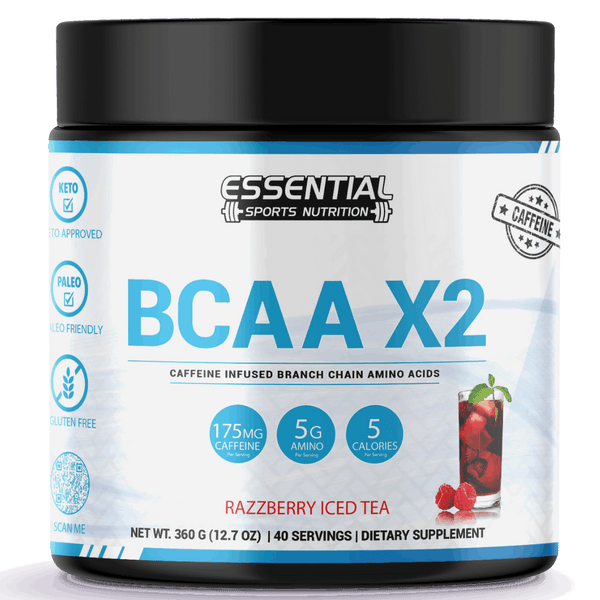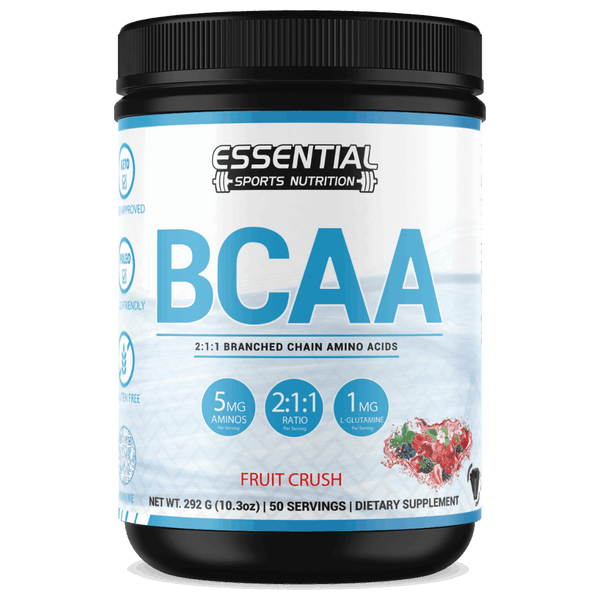Weight Loss Smackdown: Low-Carb Diet vs. Paleo Diet - Which Triumphs?
Comparing low-carb diets with the Paleo diet involves key differences. Low-carb options, like Keto and Atkins, limit carbs below 130 grams daily and often include dairy and legumes. They aim for quick weight loss and blood sugar control. The Paleo diet emphasizes eating like our ancestors, focusing on whole, unprocessed foods, but excludes grains, legumes, and dairy. While both promote whole foods and healthy fats, low-carb diets prioritize macronutrient ratios, whereas Paleo focuses on food quality and long-term health. Each has unique benefits, so understanding your health goals can help you choose the best fit for you. Explore further for detailed insights.

Key Takeaways
-
Low-carb diets restrict carbohydrates to below 130 grams daily, while Paleo focuses on whole, unprocessed foods without specific carb limits.
-
Low-carb diets, including keto, aim for rapid weight loss by shifting the body to burn fat for fuel.
-
Paleo diet eliminates grains, legumes, and dairy, promoting nutrient-dense foods similar to ancestral eating patterns.
-
Both diets prioritize whole foods and limit processed sugars to reduce inflammation and improve metabolic health.
-
Low-carb emphasizes quick blood sugar management, whereas Paleo promotes long-term sustainability and overall wellness.
Defining Low Carb Diets
A low-carb diet typically restricts carbohydrate intake to below 130 grams daily to promote fat-burning and reduce reliance on carbs for energy. This approach includes various popular diets like Atkins, ketogenic (keto), and paleo. Each diet has its unique guidelines but shares the core principle of minimizing carbohydrate consumption.
In an Atkins diet, you'll find a moderate carb restriction, gradually increasing carbohydrate intake as you move through its phases. The ketogenic diet, on the other hand, is much stricter, often limiting carbs to just 20-50 grams per day to maintain a state of ketosis, where your body burns fat for energy. The paleo diet also falls under the low-carb category, emphasizing real, whole foods and eliminating processed carbohydrates, though it's not as restrictive with specific carb counts.
Low-carb diets emphasize consuming real, whole foods like vegetables, lean meats, and healthy fats, steering clear of processed carbohydrates such as sugary snacks and refined grains. This focus helps reduce overall carbohydrate intake and promotes better nutrient density and energy stability in your diet. By limiting carbs, these diets aim to optimize your body's metabolic flexibility and energy utilization.
Understanding the Paleo Diet

The Paleo Diet draws inspiration from the dietary patterns of our Paleolithic ancestors, advocating for a return to whole, unprocessed foods to enhance health and well-being. The Paleo Diet emphasizes nutrient-dense options like vegetables, fruits, nuts, seeds, lean meats, and healthy fats by focusing on ancestral eating. These whole foods are believed to align closely with what early humans consumed, promoting a lifestyle that supports peak health.
Central to the Paleo Diet is the elimination of grains, legumes, dairy, processed sugar, and most processed foods. This approach aims to reduce the intake of inflammatory and nutrient-poor items commonly found in modern diets. By avoiding these processed foods, you can potentially lower inflammation and improve overall health outcomes. The emphasis on nutrient-dense, whole foods ensures you get various essential vitamins, minerals, and antioxidants, contributing to better health and well-being.
Adopting the Paleo Diet is more than just changing what you eat; it's about embracing a lifestyle prioritizing natural, unprocessed foods. This commitment to ancestral eating can support weight management, boost energy levels, and reduce the risk of chronic diseases linked to modern dietary patterns.
Similarities of Paleo and Low Carb Diets

You'll find that both low-carb and paleo diets prioritize whole, unprocessed foods, which can lead to better health outcomes. By limiting grains, legumes, and processed sugars, these diets aim to reduce inflammation and improve metabolic health. Additionally, both encourage the intake of healthy fats from sources like nuts and seeds, promoting nutrient density and satiety.
Focus on Whole Foods
Emphasizing whole, unprocessed foods stands as a central tenet in both low-carb and Paleo diets. By focusing on natural sources of nutrients, these diets prioritize the consumption of vegetables, fruits, nuts, seeds, and lean meats. This emphasis on whole foods not only enhances nutrient intake but also aids in weight management and overall health.
Here are three key points to keep in mind:
-
Nutrient Density: Both diets emphasize whole foods, which are rich in essential vitamins and minerals. Vegetables and fruits, for instance, provide fiber, antioxidants, and phytonutrients that support overall health.
-
Reduced Processed Foods: The exclusion of processed foods and added sugars in these diets helps reduce the risk of chronic diseases. Focusing on unprocessed foods minimizes the intake of harmful additives and preservatives.
-
Natural Sources of Protein and Fat: Lean meats, nuts, and seeds are prioritized, providing high-quality protein and healthy fats. These natural sources play a vital role in muscle maintenance, brain function, and overall well-being.
Incorporating these whole, unprocessed foods into your diet can lead to numerous health benefits, aligning with the core principles of both the low-carb and Paleo approaches.
Avoidance of Processed Foods
Building on the focus of whole, unprocessed foods, both low-carb and Paleo diets strongly advocate for the avoidance of processed foods to achieve better health outcomes. Processed foods are often laden with refined sugars, unhealthy fats, additives, and preservatives, all of which can negatively impact your health. By emphasizing whole, natural foods, these diets aim to minimize the intake of such harmful substances.
In both low-carb and Paleo diets, the restriction of processed foods is not just about cutting out refined sugars and unhealthy fats; it's also about enhancing digestion and nutrient absorption. When you consume foods closer to their natural state, you're more likely to receive the full spectrum of nutrients your body needs for improved health. Additives and preservatives found in processed foods can disrupt your digestive system and hinder the absorption of essential nutrients.
Adhering to a diet rich in whole, natural foods can lead to enhanced overall well-being. Eliminating processed foods aligns with the principle of consuming foods as nature intended, providing your body with the nutrients it requires for better digestion, effective nutrient absorption, and improved health. Both low-carb and Paleo diets prioritize these benefits, making them effective choices for those seeking improved health outcomes.
Key Differences

When comparing low-carb and Paleo diets, you'll notice significant differences in food restrictions and nutritional focus. Low-carb diets, like Keto, strictly limit carbohydrate intake to induce ketosis, while Paleo emphasizes whole, unprocessed foods and excludes grains, legumes, and dairy. These distinct approaches impact not only the types of foods you can eat but also the macronutrient balance of your diet.
Food Restrictions Comparison
A key difference between low-carb and Paleo diets is that the former restricts carbohydrate intake but allows a broader spectrum of foods, whereas the latter eliminates grains, legumes, dairy, and processed foods. When you follow low-carb diets, your primary focus is on limiting carb intake, which means you can still consume various foods, including some dairy and non-legume carbohydrates. This flexibility allows you to adjust macronutrient ratios to either moderate or severely reduce carbs, often to induce ketosis.
On the other hand, the Paleo diet emphasizes ancestral eating patterns. You'll need to adhere to strict food restrictions, excluding grains, legumes, and dairy entirely. This means focusing on whole, unprocessed foods that our ancestors might have eaten. Here's a breakdown of key food restrictions:
-
Grains and Legumes: Low-carb diets may permit small amounts, but the Paleo diet strictly eliminates them.
-
Dairy Products: Low-carb diets might include certain dairy items, while Paleo excludes all dairy.
-
Processed Foods: Both diets discourage processed foods, but Paleo is more stringent in its exclusion.
Understanding these restrictions will help you make informed dietary choices based on your nutritional goals.
Nutritional Focus Differences
Unlike the Paleo diet, which centers on ancestral eating habits, low-carb diets prioritize reducing overall carbohydrate intake to influence metabolic processes. Low-carb diets, such as the ketogenic diet, focus on manipulating carbohydrate intake to achieve specific metabolic states like ketosis. This involves strict macronutrient ratios—high fat, moderate protein, and very low carbohydrates. Typically, these diets restrict carb intake to below 130 grams per day to shift the body into burning fat for fuel.
In contrast, the Paleo diet emphasizes consuming whole, unprocessed foods mimicking what our ancestors might have eaten. It excludes grains, legumes, and dairy, focusing more on the quality of food rather than specific macronutrient ratios. While both diets advocate for the consumption of healthy fats, the Paleo diet is less stringent on carbohydrate manipulation.
Low-carb diets may allow some dairy and legumes, depending on the specific type, whereas the Paleo diet strictly avoids these foods. This fundamental difference in food choices underscores their distinct nutritional focuses. Ultimately, while low-carb diets target metabolic changes through carbohydrate reduction, the Paleo diet aims to replicate ancestral eating patterns with a focus on unprocessed foods.
Health Benefits

Exploring the health benefits of low-carb and paleo diets reveals significant improvements in weight management, blood sugar levels, and overall metabolic health. A low-carb diet is well-documented for its effectiveness in rapid weight loss and improved blood sugar control, which can be particularly beneficial for individuals with diabetes or prediabetes. This dietary approach can also reduce the risk of chronic diseases and inflammation, promoting better metabolic function.
On the other hand, the paleo diet emphasizes whole, unprocessed foods, leading to better nutrient intake and gut health. This focus on nutrient-dense choices supports weight loss and provides a sustainable lifestyle change, which can be easier to maintain in the long term. Furthermore, both diets have shown potential in supporting heart health and reducing inflammation, contributing to overall well-being.
To summarize, here are the key health benefits:
-
Weight Loss: Both diets aid in weight loss, with low-carb offering quicker results and paleo emphasizing long-term sustainability.
-
Blood Sugar Control: Low-carb diets are particularly effective in managing blood sugar levels.
-
Nutrient Intake and Gut Health: The paleo diet promotes a higher intake of nutrient-dense, whole foods.
Incorporating elements from both diets can optimize your health outcomes.
Potential Drawbacks

While the health benefits of low-carb and paleo diets are well-established, it's important to keep in mind the potential drawbacks associated with these dietary approaches. For example, low-carb diets can lead to initial side effects such as fatigue, headaches, and constipation as your body adjusts to the reduced carbohydrate intake. Additionally, these diets often restrict certain high-fiber foods, which can increase the risk of digestive issues and nutrient deficiencies.
Paleo diet restrictions also pose challenges. The paleo diet may limit your calcium intake by excluding dairy products, potentially impacting bone health. While beneficial, the emphasis on whole foods can require more time for meal preparation and planning, making it less convenient for those with busy lifestyles.
Both low-carb and paleo diets may lack variety in food choices. This lack of diversity can lead to nutrient deficiencies if the diets are not carefully balanced. Therefore, while these diets can offer health benefits, they also come with challenges you must keep in mind. Ensuring a well-rounded intake of nutrients is essential to avoid potential health issues associated with these dietary restrictions.
Choosing the Right Diet
When selecting the appropriate diet, it's important to take into account your specific health goals, food preferences, and lifestyle to guarantee long-term sustainability and nutritional adequacy. Whether you're considering a low-carb diet or the Paleo diet, each has unique aspects that might better align with your needs.
First, reflect on your health goals:
-
If weight loss is your primary objective, a low-carb diet might be more effective due to its structured approach to reducing carb intake.
-
For overall wellness, the Paleo diet emphasizes whole foods and can support better health outcomes with its broader food variety.
Next, evaluate your food preferences:
-
If you enjoy dairy and legumes, a low-carb diet might be more suitable since the Paleo diet restricts these foods.
-
Paleo allows greater flexibility in food choices, which may enhance long-term sustainability.
Finally, consider professional advice:
-
Always consult with a healthcare provider to make sure the diet you choose aligns with your individual health needs and goals.
-
Tracking your macro intake is important. If you prefer a more structured plan, low-carb or keto diets provide specific macronutrient ratios, whereas Paleo offers more flexibility.
Conclusion

Ultimately, picking between a low-carb diet and the Paleo diet boils down to your health goals and lifestyle. Both can offer significant benefits, like improved blood sugar levels and weight management. However, each has its own quirks and potential drawbacks. So, don't just jump on the diet bandwagon—consider your unique needs and perhaps consult a nutritionist. Remember, what works for one person might not work for another. Choose wisely!
Low Carb and Paleo Diet FAQs
Q: What is the difference between a Low Carb Diet and a Paleo Diet?
A: A low-carb diet focuses on reducing carbohydrate intake, while a Paleo diet involves eating foods believed to have been available to humans during the Paleolithic era.
Q: Are Keto and Paleo diets similar?
A: The Keto and paleo diets share some similarities, such as being low in carbohydrates and emphasizing whole, nutritious foods.
Q: How do Keto and Paleo diets differ?
A: The key difference between Keto and Paleo diets is that Keto is a high-fat, low-carb diet designed to induce ketosis, while Paleo is based on foods that would have been available to early humans.
Q: Can dairy be consumed on both Paleo and Keto diets?
A: Dairy is generally not allowed on the Paleo diet, while some dairy products may be consumed in moderation on the Keto diet.
Q: What are the main food groups emphasized in a Keto diet?
A: A Keto diet focuses on high-fat foods, moderate protein intake, and very low carbohydrate consumption.
Q: Is the Atkins Diet similar to the Keto or Paleo diets?
A: The Atkins Diet is similar to the Keto diet as it also emphasizes low carbohydrate intake, but it may include processed foods not allowed on the Paleo diet.
Q: How does the Paleo diet differ from the Keto diet in terms of macronutrient distribution?
A: The Paleo diet does not dictate specific macronutrient ratios, while the Keto diet is high in fats, moderate in protein, and very low in carbs.
Q: Is Low-Carb or Paleo Better?
A: It depends on your goals. Low-carb might be better if you aim for quick weight loss and blood sugar control. Paleo's focus on unprocessed foods could be more beneficial for overall health and flexibility.
Q: What Are 3 Disadvantages of the Paleo Diet?
A: Oh, the joys of the Paleo diet! You'll miss out on calcium and vitamin D, struggle with the expense of organic foods, and face the challenge of dining out while avoiding grains, legumes, and dairy.
Q: Does the Paleo Diet Cut Out Carbs?
A: The Paleo diet doesn't completely cut out carbs. Instead, it reduces them by eliminating grains, legumes, and processed sugars. You'll still get carbs from fruits, vegetables, nuts, and seeds, focusing on low-glycemic sources.
Q: How Many Carbs Can You Eat on Paleo?
A: On the Paleo diet, you can consume around 100-150 grams of carbs daily, primarily from fruits and vegetables. This diet's beauty is its focus on nutrient-dense, whole foods, providing quality carbohydrate sources.























